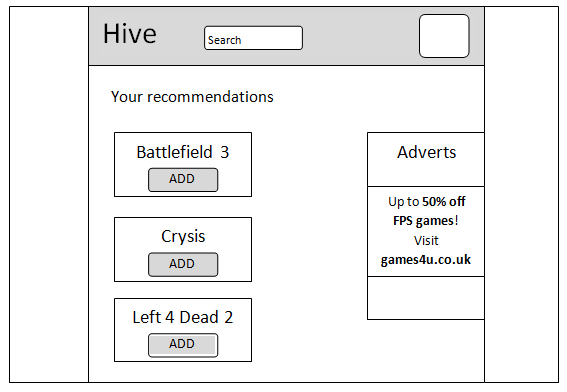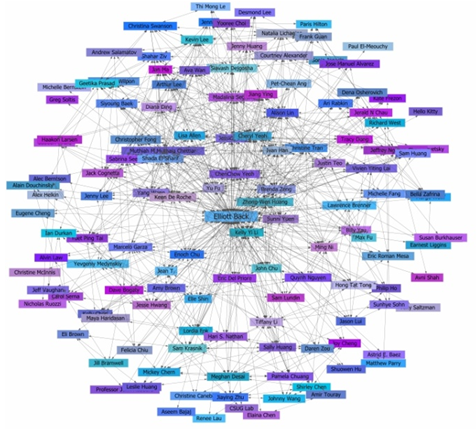Basic Advertising
Hive could offer advertisers the chance to advertise their brands/products on the website. It could be a basic service, with no audience specific targeting. Advertising may not be a very good source of revenue in a social networking site since it is very hard to distract users and make them want to click on adverts. This makes the ‘Cost per Click/Action’ pricing model not very effective. And since Hive would be a new website with not very many visitors, it would be difficult to negotiate a ‘Cost per mille’ scheme. If the adverts could somehow be made to integrate itself within the user experience – perhaps within the recommendations page, then maybe users would take notice…
Interest-based Advertising
- With a database of users and detailed list of their interests, Hive could eventually offer very effective ad targeting.
- Advertisers often want specific demographics when targeting, such as age, gender, income, etc. to get users who are likely to want to buy their product or service, but if the actual interests are known, then it would be much more effective since a person’s interests are usually very closely tied with what they want to purchase. Advertisers can therefore target precisely the users, and only those users who have a high chance of clicking on their advert.
- Since Hive with have users with such varying interests, it is an opportunity for companies in niche markets to advertise their products, aiming specifically at users who are interested in them, which could be difficult to do otherwise.
- To make users more likely to view the adverts, they can be placed on the recommendations page to compliment the Hive interest suggestions for specific users based on their current interests and what Hive thinks the user would like. This would fit into the purpose of that specific web page, and the user’s intent – they are looking for interesting new things, and the adverts will be adverting things that have a high probability of interesting them.
User Interest Data
- Most of the user’s non-personal data would be useful to certain organisations; some even pay social networking sites to conduct surveys on their users since they have access to focused audience groups with specific interests or group of interests.
- Hive may have to offer some form of incentive to users for participating.
- Some information may not even need to be gathered via a survey to be of use to some organisations. This information could include trends in user’s tastes and interests, how many people like a specific product, etc.
- Organisations may want data on user’s opinions on a product e.g. the game developers may want to know what people think of a game they have recently released and ask Hive to find trends and keywords which users use when posting about that game.
- Use of user’s data would have to be included in the user agreement.
Micropayments
- Hive could be designed in some way to offer small improvements or some sort of exclusive customisation to the user for a small price.
- The price would have to be small, and the additional features should make the users feel like they received real value for their money.
- Small amounts of money from a large amount of users could amount to a substantial amount.
Partnership
- Social networking sites may have very targeted demographics, and some of these sites could benefit from each other if they shared resources.
- One possible partnership could be with Meetup.com. Hive would be able to provide a large user base with detailed lists of their interests and locations, while Meetup would be able to provide local groups for users to join and participate in real life with new friends. The site would be able to share revenue this way, or Meetup.com could just pay Hive to display Meetup as an affiliate.
- Possible legal implications on sharing data.




